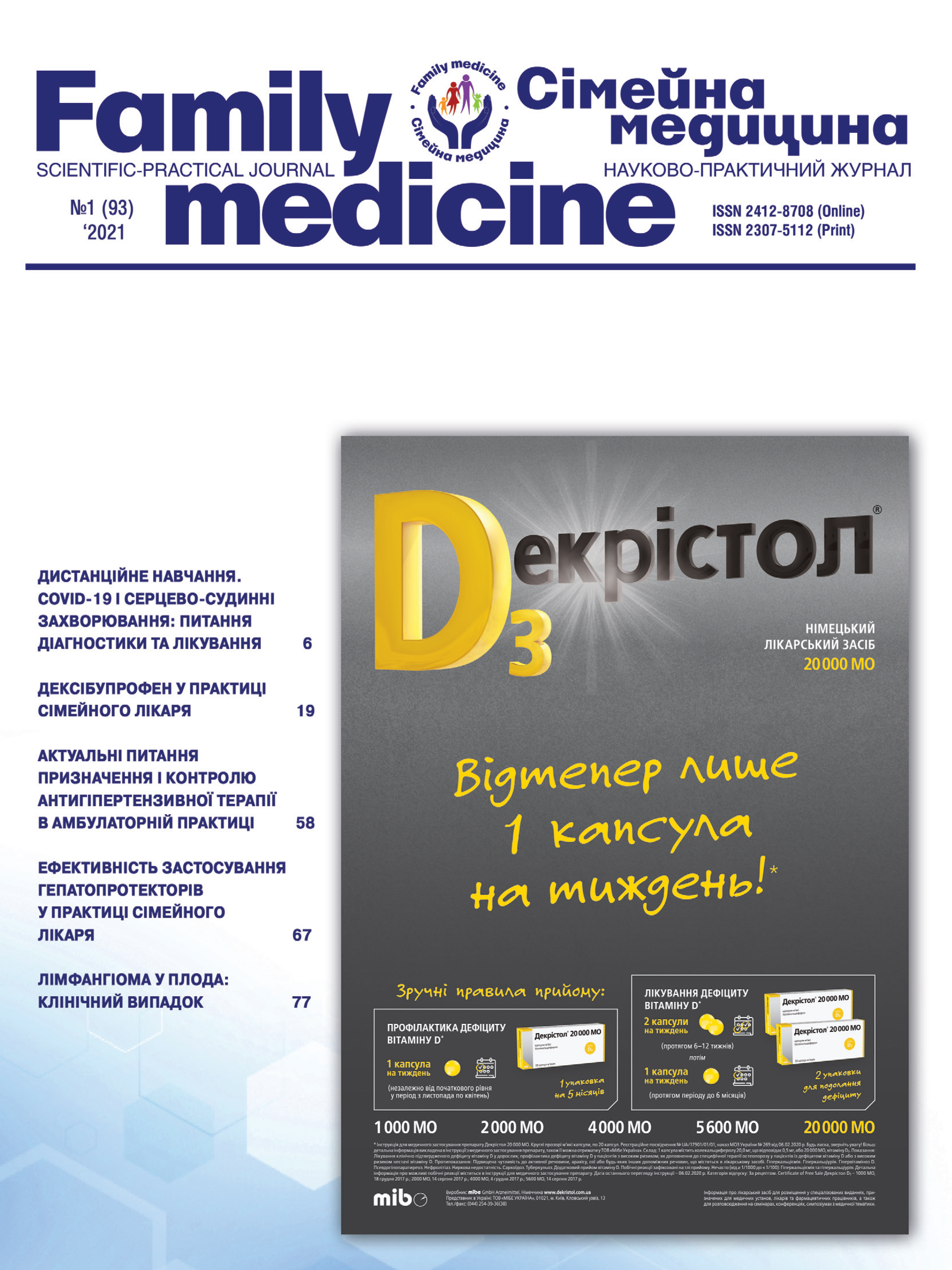Features of the Course and Treatment of Osteoarthritis in Patients with Osteoporosis and Obesity
##plugins.themes.bootstrap3.article.main##
Abstract
The objective: features of the course and clinical manifestations of the joint syndrome and increase the effectiveness of treatment in patients with OA with osteoporosis and obesity.
Materials and methods. The study included 134 patients (88 women and 46 men), aged 30 to 80 years. Depending on the body mass index, patients were divided into 2 groups: obese and normal weight. Peculiarities of the course and effectiveness of treatment were assessed using questionnaires VAS, WOMAC, Lekens. Levels of nonspecific inflammatory parameters (ESR and CRP), cytokines (IL-1, IGF-1, NO), uric acid level and bone mineral density were also studied. SPSS Statistics was used for statistical data processing.
Results. The study revealed a statistically significant difference in the indicators of the questionnaires VAS, WOMAC and Leken, levels of immunological (IL-1, IGF-1, NO) and nonspecific (ESR, CRP) indicators of inflammation between the 2 groups of patients. Patients with osteoporosis and obesity had the worst questionnaires and indicators of inflammation, compared with patients with normal BMD and osteopenia. In obese patients, the dynamics of treatment was significantly worse, according to questionnaires, immunological and nonspecific indicators of inflammation.
Conclusions. Patients with OA and obesity, compared with normal weight, had more severe joint damage, more intense pain, stiffness and reduced functional activity, as well as more intense inflammation. The most severe course of the disease was observed in patients with osteoporosis and obesity, compared with normal BMD and osteopenia. The dynamics of SYSADOA treatment is impaired in patients with osteoarthritis and obesity: less intense reduction of knee stiffness, pain and poorer functional activity, as well as less effective anti-inflammatory effect.
##plugins.themes.bootstrap3.article.details##

This work is licensed under a Creative Commons Attribution 4.0 International License.
Authors retain the copyright and grant the journal the first publication of original scientific articles under the Creative Commons Attribution 4.0 International License, which allows others to distribute work with acknowledgment of authorship and first publication in this journal.
References
Haslam D.W. Obesity. Lancet 2005;366:1197–209.
Шишкова В.Н. Ожирение и остеопороз. Остеопороз и остеопатии. 2011;14(1):21–26. https://doi.org/10.14341/osteo2011121-26
Соловьева И.В., Стребкова Е.А., Алексеева Л.И., Мкртумян А.М. Влияние снижения массы тела на клинические проявления остеоартроза коленных суставов // Остеопороз и остеопатии. – 2017. – Т. 20. – № 4. – С. 11–18. doi: https://doi.org/10.14341/osteo6790
Rani M.P., Krishna M.S., Padmakumari K.P. et al. Zingiber officinale extractexhibits antidiabetic potential via modulating glucose uptake, protein glycation and inhibiting adipocyte differentiation: Anin vitro study. J. Sci. Food Agric., 2012. Vol. 92. P. 1948–1955.





